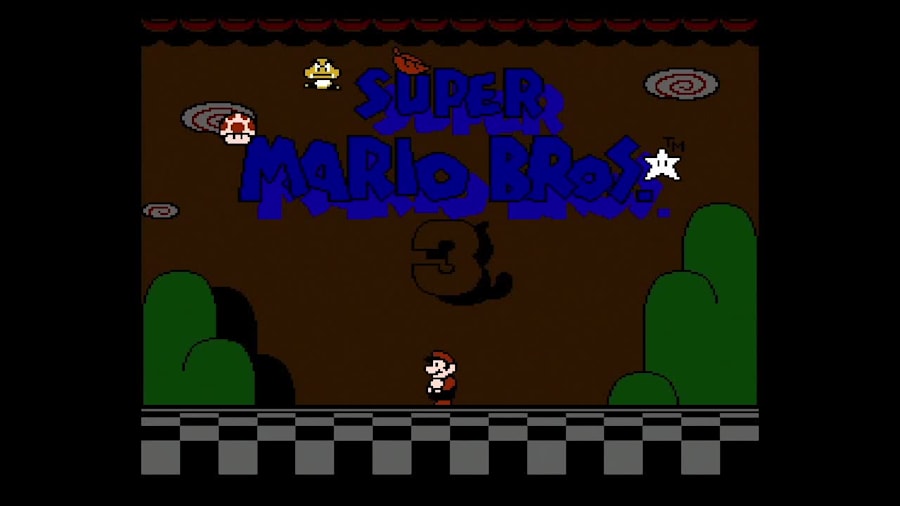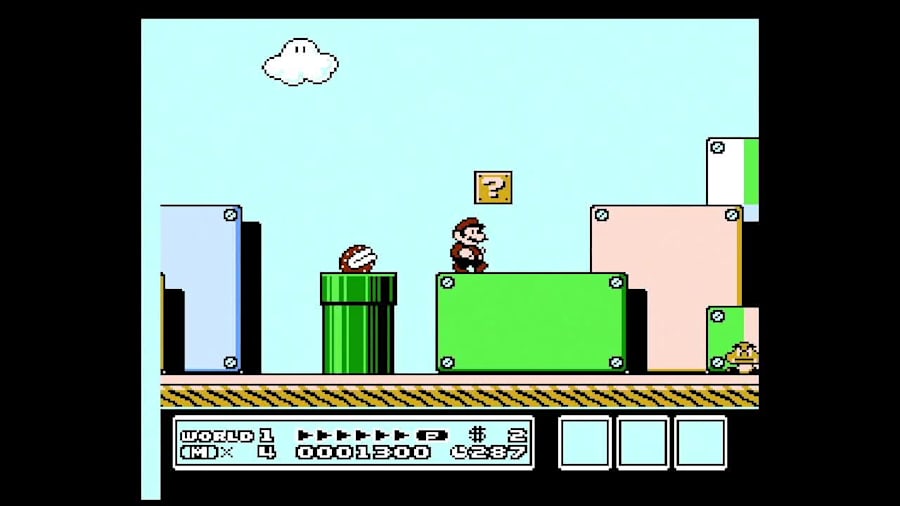Nintendo Classic Mini: NES special interview – Volume 3: Super Mario Bros.
18/11/2016
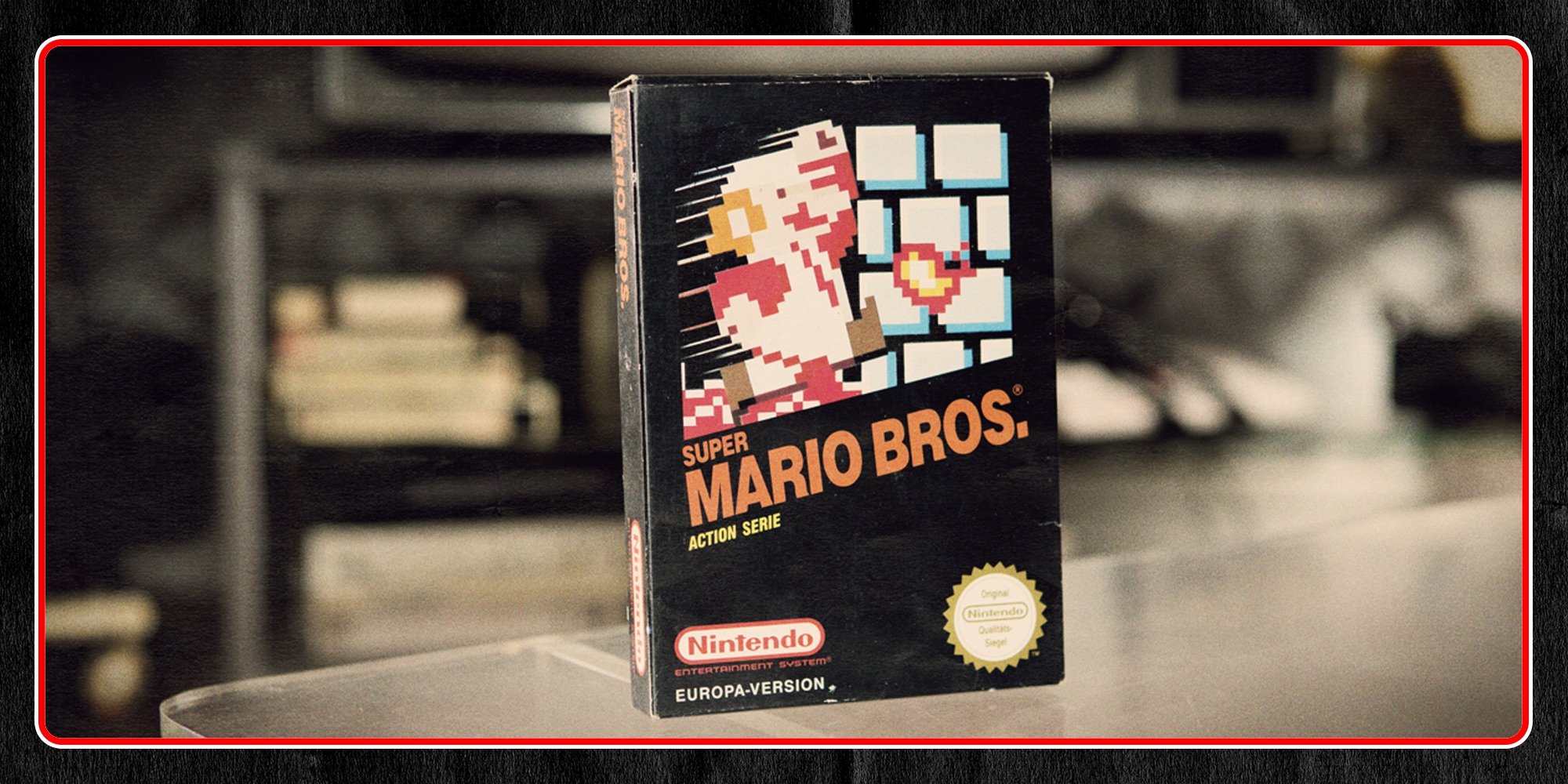


FamiConnichiwa, everyone! I’m Akinori Sao, a writer in Kyoto. This is my third interview with video game developers to commemorate the release of the Nintendo Classic Mini: Nintendo Entertainment System. The topic this time is Super Mario Bros., the game most representative of the original Nintendo Entertainment System (NES).
As you may know, Super Mario Bros. was a huge hit that became an unprecedented worldwide phenomenon, so Nintendo has already shared a lot of behind-the-scenes anecdotes. For example, the Iwata Asks sessions covering New Super Mario Bros. Wii (Volume 1, Volume 2 and Volume 3) and the 25th anniversary of Super Mario (Volume 5: Original Super Mario Developers) come to mind. These are all great reads, so if you haven’t already checked them out, please do!
This time, in addition to the first Super Mario Bros. game, we’ll hear about Super Mario Bros. 3, which came out three years later in Japan (almost six years later in Europe). In this interview, I spoke with Shigeru Miyamoto, who I also interviewed about Donkey Kong in Volume 1: Donkey Kong, as well as designer Takashi Tezuka and sound designer Koji Kondo. We’ll hear all about the development challenges of Super Mario Bros. 3, so please stick with us to the end!
And now for Miyamoto-san, Tezuka-san and Kondo-san…

Volume 3: Super Mario Bros.
The Culmination of All Famicom Cartridge Games
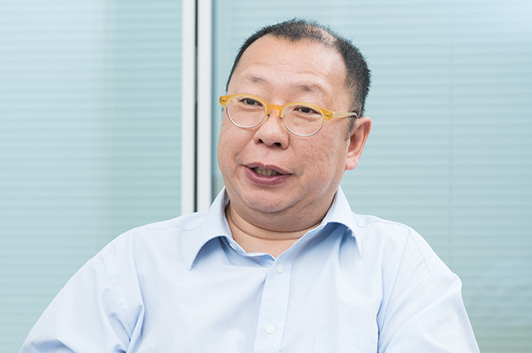
Tezuka-san, you and Kondo-san joined Nintendo in the same year. At that time, the Famicom1 was already on sale.
1. Famicom: Family Computer. The NES is known as Famicom in Japan.
That’s right. Nintendo had released the Famicom the year before, in 1983.
Did you have one?
(bluntly) Um, no.
(laughs)
I did buy one after joining the company.
And you, Kondo-san?
I didn’t have one either. I played a lot of arcade games though. Donkey Kong 32 was popular at the time I entered the company, so I was playing that as much as I could.
2. Donkey Kong 3: A shooting game that appeared in arcades in 1983. The Famicom version was released in July the following year, and later for NES.
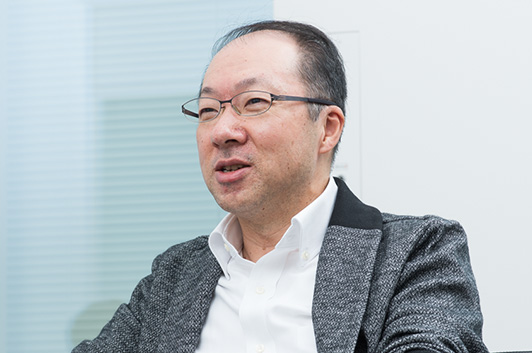
What was your impression of the Famicom back then?
I liked how you could play arcade games at home.
I didn’t have any knowledge of this thing called the Family Computer (Famicom), so I thought it was like a home computer! (laughs)
(laughs) When it first came out, I suppose more than a few people had that misunderstanding.
Yeah. It’s hard to believe that someone like me, who was so unknowledgeable, would end up developing games for the Famicom.
Our topic today is Super Mario Bros. Miyamoto-san, what was your approach toward this game?
I wanted to make a game that would be the culmination of all Famicom cartridge games up to that point.
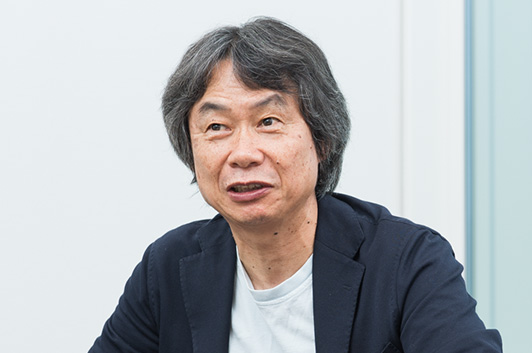
From the release of the original Famicom until the Japanese release of this game – which would go on to become a worldwide hit – it took two years. Did the participation of Tezuka-san and Kondo-san play a big role in making it happen?
Yes. I was doing design work all on my own, so Tezuka-san’s arrival was a big help. The first game we made together was Devil World3.
3. Devil World: An action game released for the Famicom system in October 1984 in Japan, and later for the NES in Europe.
Kondo-san, that game was also your debut work, wasn’t it?
Yes.
Later, we made Excitebike4, which is included in the Classic Mini NES. Tezuka-san helped a little that time, too.
4. Excitebike: A racing game released for the Famicom system in November 1984 in Japan, and later for the NES in Europe.
In Devil World, players could control a player-character twice as big as in games before it, and Excitebike had a scrolling screen and warping. And all of that accrued technology was at work in the development of Super Mario Bros.
That’s right. We wanted to pack various technologies into one Famicom cartridge game, like a puzzle. So we ended up making the player-character larger, and creating long courses that scroll.
The Family Computer Disk System5 came out the next year.
5. Family Computer Disk System: A peripheral product for the Famicom system released in Japan in February 1986. The floppy disks used with the system had greater memory than ROM cartridges, allowing players to save game data. This system was sold only in Japan.
That’s why I really wanted to make Super Mario Bros. the grand culmination of Famicom cartridges. We had built up a lot of know-how since the release of the console, and the time had come when that would be possible.
From Big Mario to Small Mario
Tezuka-san, when you started working on Super Mario Bros., what sort of concept did Miyamoto-san lay out?
He said he wanted to make gameplay in which a large player-character would run and jump around fairly large courses.
So at first, you just controlled a big Mario.
Yes.
Quite a long time ago, a manga magazine had stories about the development of Super Mario Bros.
Yes, that’s right. (laughs)
That manga contained an episode in which a bug caused only Mario’s upper half to show when displaying that big Mario, and that’s what gave you the idea for a small Mario.
(bluntly) That’s absolutely not true.
(laughs)
I remember this clearly. Tezuka-san, Nakago-san6 and I were having a meeting, and we had the length of all the courses drawn up on a whiteboard. We were discussing whether there was any way to see farther ahead.
6. Toshihiko Nakago: President, SRD Co., Ltd. SRD is a company that develops video game software for other companies, and develops and sells CAD packages. For many years, SRD has been involved with the development of the Super Mario and The Legend of Zelda series.
Mario was big, so you couldn’t see very far?
Right. We could pull back for a broader view, but then Mario would be smaller. Then Nakago-san said, “Wait a minute. Wouldn’t it be fun to have a small Mario, too?”
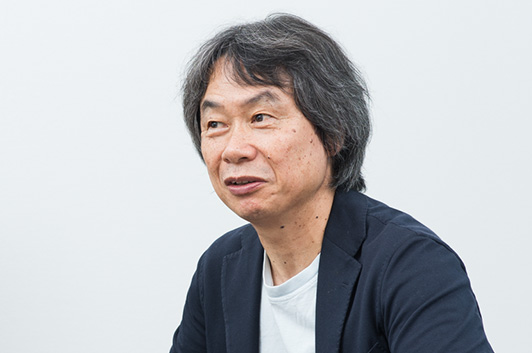
Ah, I see. You introduced a smaller Mario to make it easier to see what’s ahead in the course.
Yes. And then we decided that you’ll lose a turn when the smaller Mario runs into an enemy. When big Mario runs into an enemy, he would just get smaller. That would be a brand new game mechanic, and we decided to go with it right away in that meeting.
So the inspiration didn’t come from a bug as in the manga. (laughs)
No. (laughs)
By the way, did you ever consider letting players start the game with the bigger Mario?
Starting with the small Mario would make players happier when Mario got bigger later, and it would also give a better impression to players. (To Tezuka-san) We decided that quickly, right?
Yes.
And since Mario had gotten bigger, we added “super” to the title to make it Super Mario Bros.
Beginning with a Bird’s-Eye View
Stories about the development of Super Mario Bros. appear in previous sessions of Iwata Asks on Nintendo’s website, so I thought I would ask about Super Mario Bros. 3.
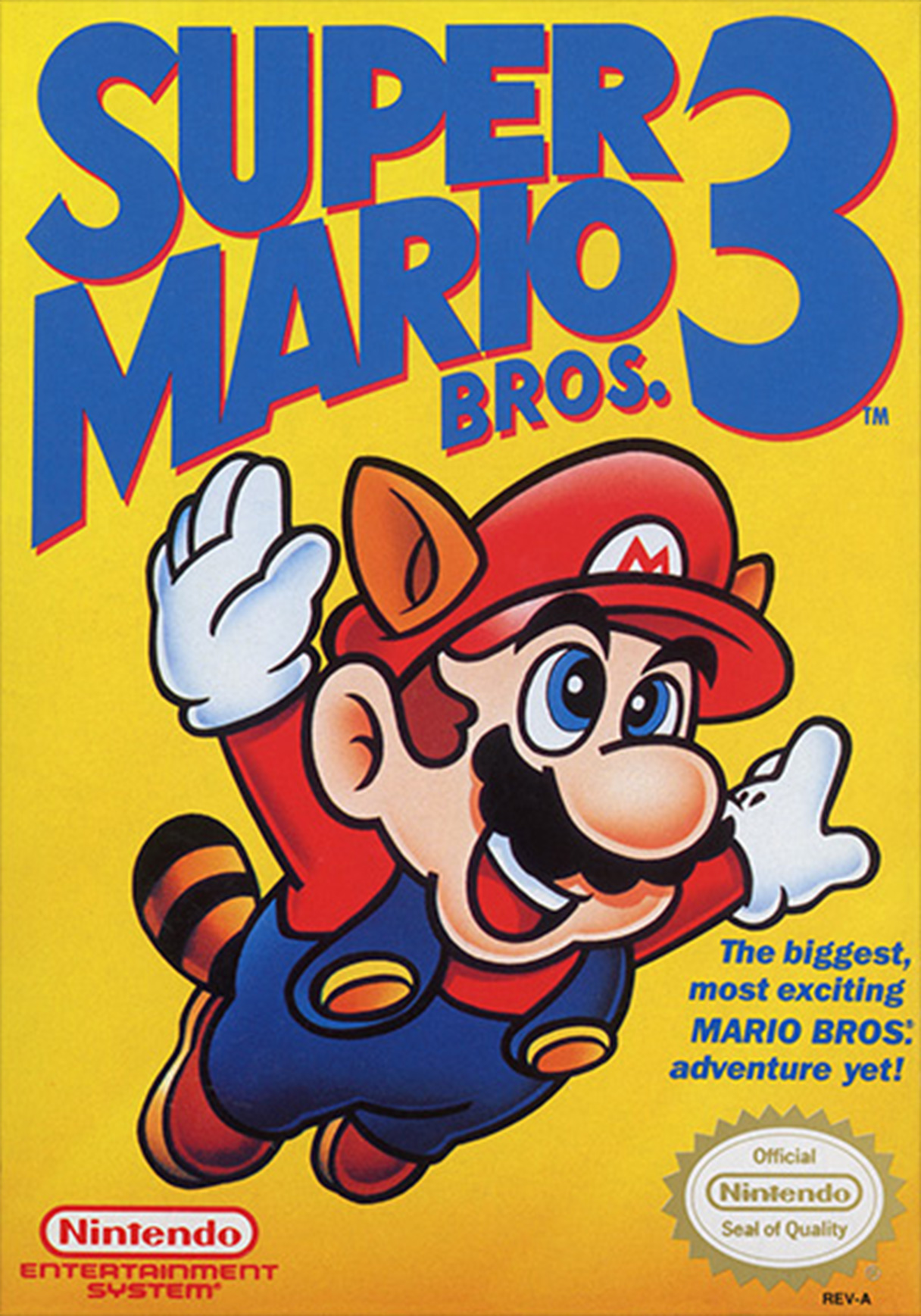
All right.
Super Mario Bros. 3 came out in 1988 in Japan, three years after Super Mario Bros. How did that come about?
The game before that, Super Mario Bros.: The Lost Levels7, had been Tezuka-san’s directorial debut. That went well, so we decided to make a completely new game.
7. Super Mario Bros.: The Lost Levels: A platform game originally sold as Super Mario Bros. 2 in Japan for the Famicom system in June 1986. It looked and played very similar to the first Super Mario Bros., but with a tougher challenge level developed for advanced players. It later released in Europe via Virtual Console for Wii in 2008, for Nintendo 3DS family systems in 2012 and for Wii U in 2014.
Tezuka-san, did you feel pressure as the director of Super Mario Bros. 3? After all, the original Super Mario Bros. was an incredible hit.
I didn’t feel pressure from the original game so much as I felt like I needed to do a good job. But it wouldn’t come together well, and it dragged on.
And Nakago-san got angry. (laughs)
Yeah, he definitely got angry. (laughs)
What wouldn’t come together?
At first, we were making it with a bird’s-eye view rather than a side view.
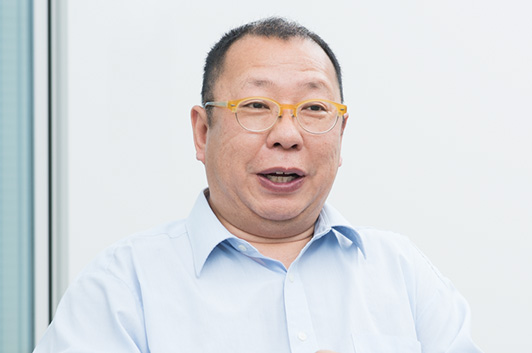
The view was looking down diagonally from overhead rather than directly from the side as in Super Mario Bros.
Yes. But we couldn’t do it well.
He said he wanted to look from a little above. But in Super Mario Bros. it’s important to know whether Mario’s feet have hit the ground or not, even if it’s just barely. With a diagonal view from slightly overhead, you lost your sense of distance to the ground. So I told him that development would be difficult.
Yeah, it was. (laughs wryly) So partway through development, we switched to a side viewpoint, but there are relics of the bird’s-eye view in the final product.
Yeah.
For example, the black-and-white checkered floor.
Yeah.
Tezuka-san, what was your original idea for making Super Mario Bros. 3?
We made Super Mario Bros.: The Lost Levels by changing the original game’s difficulty and stage design, but we couldn’t do that again, so I wanted to change everything, including its general appearance.
So that’s why you kept attempting new things like trying a bird’s-eye view and outlining the characters in black.
Yes.
Mario’s face changed a lot, too. His eye was now one dot away from his cap, so he looked cuter.
The original Mario’s eyes and hat were conjoined, so I wanted to change that, too.
Human Wave Tactics
Mario has more actions, too.
Yeah. A tail seems a bit forced, so I really worried about that. I kept wondering if Mario and a raccoon was the right match.
Why a raccoon tail?
Because I wanted to put in a new action where players could press a button to have Mario spin around and knock enemies out of the way with his tail.
You originally gave him a tail so he could blow away enemies rather than fly. That’s why you chose a raccoon?
Yes. When we switched from a bird’s-eye view back to a side view, the controls didn’t work well and making adjustments was a challenge. Flying was something I had wanted to do since the first game, and Raccoon Mario ended up being able to do both.
So Raccoon Mario was there from relatively early on. And then there’s Frog Mario…
And Mario in Goomba’s Shoe.
We were experimenting with a bunch of things, and in the end…
We started talking about how to pull it all together and I joined in to help adjust it.
So the development period was a bit long.
Not a bit – a lot!
We began after Super Mario Bros.: The Lost Levels in the spring of 1986, and it still wasn’t finished a year later. In the spring of the following year, we were finally able to apply the final polish.
Yes, that’s about right.
So it took about two years. No…longer. We wanted to release it in spring of 1988, but we couldn’t do that either, so it dragged on for another six months! (laughs) (To Tezuka-san) Right?
(nods silently)
So it took two and a half years. What caused such trouble?
Well, we wanted to put in a lot of stuff. There were all these things we wanted to do, but once all the features were placed together, there were a lot of holes that needed to be patched up.
How many people made the original Super Mario Bros.?
I think it was about seven or eight people.
How about Super Mario Bros. 3?
Quite a lot more.
Maybe 20 to 30?
Yes, about that many.
We had what we called the Map Room – a long, narrow meeting room where the programmers would line up, look at sheets of paper, and program map data every day.
Yeah.
Toward the end, we made it by engaging in human wave tactics with help from a lot of people.
…But I was alone on sound.
(laughs)
Kondo-san, did it go smoothly for you working on the music all alone?
No, I had a hard time on the ground theme.
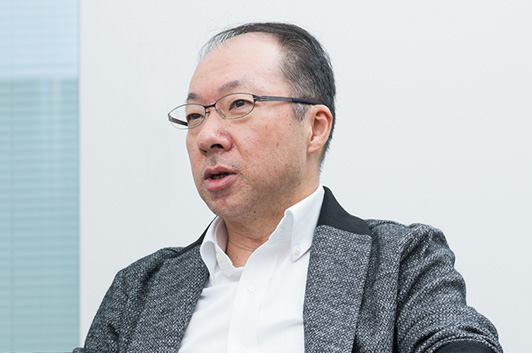
Oh, you did?
I couldn’t figure out how to change it from the original Super Mario Bros.
Yes, I suppose that would be challenging.
When I made the original Super Mario Bros. music, I didn’t pay any attention to genre. Instead, I just played the game and made music that went along with it. But as more people heard it, they started saying it sounded Latin or like fusion, and I wondered what direction to take with Super Mario Bros. 3.
You began by thinking about the genre.
Yes. People even guessed it was going to be reggae! (laughs) And having to think about the genre first led to all sorts of difficulty.
You were uncertain.
So I made two ground themes. And just before completion, I had Miyamoto-san and Tezuka-san listen to them and asked which we should use. Working on the music for Super Mario Bros. 3 was quite a challenge.
Saving All You Want
The original Super Mario Bros. and Super Mario Bros. 3 – which you finished up with human wave tactics – are both available for play on the Classic Mini NES. Kondo-san, what do you hope players will enjoy?
I think they will be able to hear a clear difference in sound between the games, even though they’re all on the same NES, so I hope they will compare the two.
What exactly should they be listening for?
Well, we had a lot of special sounds for the NES, but we couldn’t use them since they required a lot of memory. But by the time we developed Super Mario Bros. 3, we were able to use all those sounds because the cartridges had advanced and more memory became available. We could now use sounds like percussion and timpani, so the music became much richer compared to the original Super Mario Bros.
They’re both in the Classic Mini NES, so it’s easy to compare.
Right.
Tezuka-san, what do you hope players will enjoy?
I hope it will bring back memories for people who played it way back when. In particular, we put a lot of courses in Super Mario Bros. 3, but when there are lots of courses, you tend to move right on to the next one every time you clear one.
You get hasty.
But each course is packed full of game elements, so I hope players will play each course again and again to the fullest.
Especially since it took so long to make them! (laughs)
I suppose you’re right! (laughs) We made it so you can play in a lot of different ways, like focusing on defeating all the enemies, so I hope people will get the most out of it.
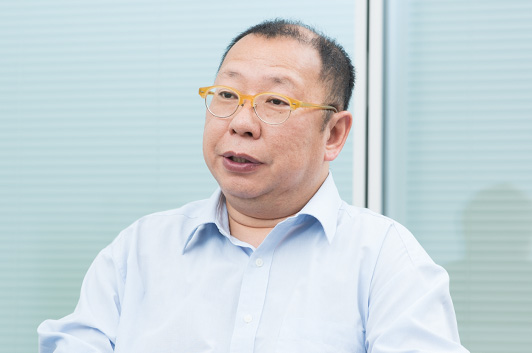
And last, Miyamoto-san.
Back when Super Mario Bros. 3 came out, everyone was stressed because they couldn’t save. There were some even saying they played it through without ever turning off the power! (laughs)
Uh-huh, there were! (laughs)
But this time you’ve got four suspend points for each of the 30 games.
You can practically save wherever you want.
So I hope players will save all they want to relieve the stress they felt before.
Packing In Over 10 Years of History
The NES is a piece of hardware that had a long life. Of the games included in the Classic Mini NES, Donkey Kong first came out in Japan in July 1983 at the same time as the original Famicom, and the last one to come out was Kirby’s Adventure
8, which came out in Europe in December 1993, so there’s over 10 years of history packed in. 8. Kirby’s Adventure: An action game released for the Famicom system in March 1993, and later for the NES in Europe..
Yes, that’s right.
Why do you think the NES was a force for so long?
A big factor is, as Kondo-san mentioned, the advancements of game cartridges.
The console itself stayed the same, but the technological advancements in the game cartridges gave birth to new kinds of gameplay.
Right. Also, a lot of new talent joined, which was important for continuing to do new things.
Even people who weren’t originally in the gaming industry, like Shigesato Itoi9, began making video games.
9. Shigesato Itoi: In addition to being a copywriter and essayist, he has been integral to the development of video games such as the Earthbound series. He runs Hobo Nikkan Itoi Shinbun, a Japanese online publication.
That’s right.
The original Super Mario Bros. was supposed to be the final game on cartridge before the Family Computer Disk System was released, but it sold so well…
The console itself took off soon after. Besides, the NES wasn’t released in Europe until after Super Mario Bros. came out in Japan.
1010. The NES was released in Europe in September 1986.
That’s three years after Japan. At the time when you made Super Mario Bros., you had a strong sense of it as the culmination of NES cartridges. But you might say that was when it all began.
Yes. After Super Mario Bros., I met a lot of people and had a lot of experiences. Recently I was on stage at an announcement11 for Apple, and everyone was excited. (laughs) That’s all thanks to Mario, the big brother!
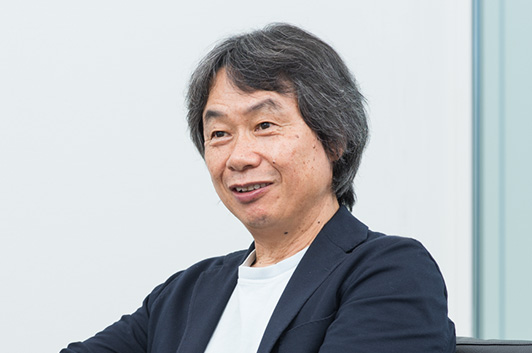
11. In September 2016, Apple announced new products at an event in San Francisco. Mr Miyamoto appeared on stage to announce Super Mario Run, a game optimised for smart devices, scheduled for release on 15/12/2016.
Please look forward to Volume 4 of this interview series, which will be all about the NES classic The Legend of Zelda!
Nintendo Classic Mini: Nintendo Entertainment System is out now. Please check with your local retailer for information on current availability.
